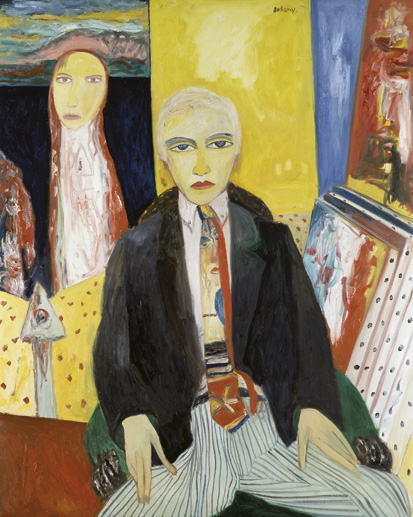When John Bellany died in August last year, an odyssey that had alternately beguiled and infuriated the art world came to an end. Famously, Bellany had nearly died from liver failure in 1988 after years of hard drinking, but an organ transplant saved his life and gave him another 25 years of painting.
Although his health was latterly precarious (he had a near-fatal heart attack in 2005) he was determined to continue working. His output was prodigious, but inevitably tended to be uneven. As both the artist and his sympathetic biographer, John McEwen, admitted, Bellany’s post-1970 work requires strict editing. (Bellany confessed that he had to paint a dozen pictures to get one beauty. Unfortunately, too many of the also-rans have found their way onto the art market.) On the other hand, his early work is exceptionally powerful: raw and dark, it draws heavily on the almost medieval upbringing that Bellany enjoyed in the fishing village of Port Seton, on the East coast of Scotland.
Born in 1942 into a family of Calvinist fishermen and boat builders, Bellany was imbued early on with a strong sense of the fundamental opposites: right and wrong, good and evil, life and death. His need to root his imagery in his own experience ensured that he never became an abstract painter, but also led later to an increasing reliance on autobiography. Bellany was a Romantic, an Expressionist and a Symbolist, finding his inspiration among such greats as Breughel and Rembrandt, Munch, Ensor and Beckmann, Leger, Soutine and Kokoschka. But he made art which is recognisably his and no one else’s and faced his own demons with a courage that irradiates his work. His youthful ambition to take on the world never left him.
This is not a new book, being an updated and expanded version of the monograph first published in 1994, but the mere fact that it has been regularly reprinted is an indication of both its quality and the subject’s enduring popularity. It is the book on John Bellany, and this new third edition is the most lavish and best-illustrated version so far. It contains a foreword full of praise by the late John Russell, himself a writer of remarkable perception and achievement.
The dramatic narrative of Bellany’s life in art is told by John McEwen with verve and clarity in a sequence of short chapters interspersed by blocks of colour illustrations (more than 200 in total). The potency of the finest paintings here explains why Bellany is regarded as the most influential Scottish painter of the last century, and why he is widely admired and collected by the likes of David Bowie and Damien Hirst.
And yet Bellany was one of those figures like John Bratby (1928–92) who was enormously talented as a young man, but found he could not continue to paint at that early level of intensity without going mad or killing himself. As some kind of compensation or distraction both men over-produced, though this could not disguise the fact that their work had generally lost its fire in later years. But, also like Bratby, the best of Bellany’s work will survive because it incorporates enough personal and artistic truth for it to stand on its own, without support or justification.
This handsome and substantial volume with its engaging photo of the artist by Snowdon on the back cover, wearing a large halibut over his shoulder like a plaid, is the perfect introduction to John Bellany’s unique achievement.






Comments